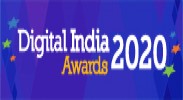1. This project was sponsored by the Environment Statistics Unit, Central Statistical Organisation, Ministry of Statistics and Programme Implementation, Government of India, New Delhi and executed by the Centre for Earth Science Studies, Thiruvananthapuram. It aimed at application of modern IT tools like RS and GIS for generating environmental statistics, integrating spatial and attribute data from diverse sources and to synthesise all information in a specific format developed for the purpose. This study also attempted to assess the extent of RS application for environmental statistics generation. Both RS and GIS are enabling tools to equip the society with more and more in-depth information base. In this context this project is exploratory in nature and an exercise in methodology development with a specific case study covering a well defined natural unit like river basin.
2. The study area, Ittikara drainage basin in Kollam district of Kerala covers an area of 650 km2. IRS -1C PAN images (1999) were used to extract data on various themes. Primary data collection included field survey, laboratory analysis and sample studies specially for water quality. The results are presented in four parts. The first part encompasses project details, results and discussions. The second part presents environmental statistics through 38 tables covering the sub themes like land, water, landuse, environmental issues, and demography. The third part is actually an environmental atlas having 29 maps covering the same themes as in part 2. The fourth part presents a grid cell approach to generate environmental data illustrated through eleven maps and two tables. Further appendix-I presents additional data (9 tables) collected at the Block level, and appendix-II provides a training module worked out to impart training to the concerned officials interested in similar work. Initial data generation and processing covered the entire basin followed by micro level data analyses for three sub basins and 33 panchayats falling within the basin. Crop statistics and demographic data are at the panchayat level.
3. Data and maps on land component show distribution of relief, landform, slope, geology and soil type. 78% of the land lies below 100m altitude. Eleven terrain units and six soil types characterize this basin. Around 33% of the total area of the basin falls in the slope category of 15% to 25%. Soils are deep to very deep and well-drained. Laterite dominates central part of the basin. Rainfall, temperature and relative humidity provide the back ground information for water component of environment. Average annual rainfall is 2661mm. Isohyet map shows that rainfall increases from south to north and from west to east. Average monthly temperature varies from 30oC to 36.5oC. In 1992 annual drainage discharge was around 553m3/sec with a seasonal variation from no flow in the month of April to 131m3/sec in the month of October. Analysis of ground water data for the periods of 1994 and 2001 available for 15 sampling stations indicated fall in water table in three cases and for rest of the 12 stations there were rise.
4. Fifteen tables and 10 maps depict landuse component. Analysis of time-series data indicated that paddy lands decreased from 13% in 1967 to 8.36% in 2002. Area under rubber plantation increased from 2.67% to 18.03% during the same period. Prime agricultural lands are increasingly being diverted to accommodate tree crops and also to develop dwelling sites. The forest-dominated Man Ar sub basin experienced a reduction in forest coverage from 52% in 1966-67 to 32% in 2002. Coconut is a common tree crop raised in all panchayats. Rubber is the major plantation crop in this area. It is cultivated in all panchayats except four panchayats along the coast. There were only three panchayats where area under seasonal crops like rice, banana and vegetables accounted for more than 50% in 2002.
5. Data and maps on environmental issues have been generated through synthesis of various factor maps and attribute data applying GIS. Soil erosion is the major environmental problem. Conversion of natural vegetation, diversion of paddy field for other purposes, sand and clay mining beyond the capacity of recuperation and deterioration of water quality in the downstream are the major problems. An environmental appraisal map presents all these issues and a table provides environmental status for each panchayat. Out of 33 panchayats, as many as 16 are beset with more than two problems. Demographic particulars are also provided. In 2002 Population density varied from 78 persons / sq.km in hilly forest area to 5533 persons / sq km in a panchayat adjoining the urban centre. A panchayat-wise environmental data matrix covers all the components like topography, altitude, rainfall, depth to water table, landuse, population and environmental issues.
6. Adopting a grid cell approach environmental data are generated to demonstrate GIS application. The entire area is divided into 500m X 500m grids and for each grid cell a set of data are computed from the thematic maps already prepared. The parameters considered for this exercise are relative relief, slope, drainage density, geology, terrain, soil, vegetation and landuse.
7. This project has brought out ground level environmental data and an environmental atlas for the Ittikara basin of Kerala. It is found that certain parameters can be successfully extracted from remote sensing data products. Application of GIS is useful to synthesize the maps and also to prepare environmental appraisal map. Mapping of environmental data provides site –specific condition and spatial perspective of the concerned theme. The environmental atlas appears to be a handy tool for assessing multi parametric association/ spatial correlation and to work out environmental management planning. Spatial database is important for proper decision making and to develop management plan. In this context this exercise demonstrates the utility of mapping to present environmental statistics and scope of using RS-GIS technologies.













